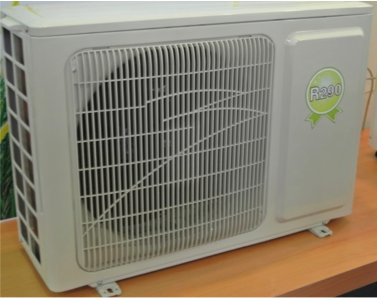Technology Now: Low-GWP technologies are bursting onto the Chinese market
Refrigeration 2013 kicked off two weeks ago, showcasing new and emerging products in refrigeration, air conditioning, and heat pumps. One of the focuses of this exposition was on new lower global warming potential (GWP) technologies that are bursting onto the Chinese market, to replace the ozone depleting substances (Chlorofluorocarbons (CFCs) and hydrochlorofluorocarbons (HCFCs)) that have been and are being phased-out under the Montreal Protocol. And their high-GWP HFCs (hydroflourocarbons) that do not harm the ozone layer, but are hundreds and thousands of times more damaging to the global climate than carbon dioxide (CO2). Many of these new technologies have been introduced through technology transfers from developed countries and international bodies.
Here are some of the highlights: On display were many CO2 heat pumps, which is an important step as 80% of residential air conditioning systems sold in China are heat pumps.

For household Air conditioners, much discussion at the Ozone2Climate industry roundtable focused on what alternatives were available for this sector. One option presented was a hydrocarbon unit from Gree, which uses propane instead of a fluorinated gas, reducing the global warming potential from 1,810 to three. This technology was developed with the support of the German government, and is 15% more energy efficient than traditional air conditioners. With China manufacturing half of the world’s 50 million mini-split AC systems annually, it is exciting to see units being introduced into the market that use this low-GWP alternative refrigerant.

Finally, in the commercial refrigeration sector, Yantai Moon, with funding assistance from UNDP, has developed a CO2 cascade refrigeration system for the Chinese market, which can be used in supermarkets and in other commercial refrigeration applications. China, with some technology transfer from developed countries and international bodies is moving to the forefront of new low-GWP technology.
